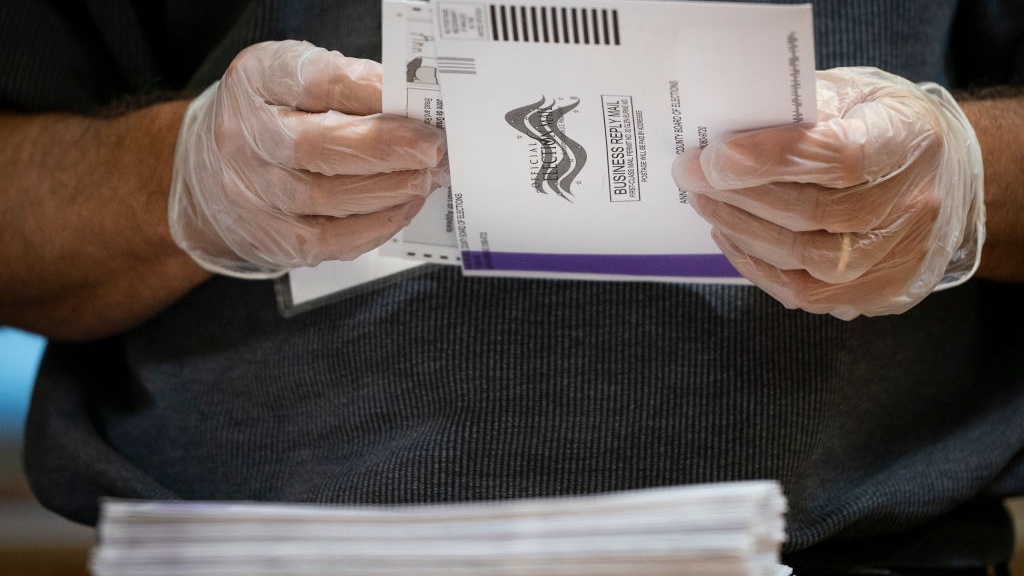More Americans will vote by mail this election than ever before in history.
Despite what fear-mongers such as President Donald Trump have to say, absentee voting is a safe and reliable way to make your voices heard in this election.
However, mail-in voting does include several specific requirements that are different than in-person voting, and the rules and deadlines vary by state. Here are 5 steps to make sure you properly vote by mail.
Register to vote. If you're already registered, make sure your registration hasn't been purged.
Voters who are mailing in their ballots must still register to vote, just as in-person voters are required to do.
Different states have different deadlines for when a voter must register in order to be able to vote in the upcoming election. If you are not sure if you registered, if you want to check the status of your registration, or if you need to register, you can visit Vote.org and simply enter some basic information, such as your name, state, and county, to check your status or register. Even if you have registered, it's safest to double-check your status and ensure that you have not been purged from the voter rolls, as has happened to many voters in recent elections, often without notification.
The Vote.org site also has a handy list of how far ahead of Election Day voters must register — note that the deadlines are measured by the numbers of days before the election rather than specific dates. Deadlines differ by state and are often different for in-person vs. absentee voting. So register early!
Request an absentee ballot.
Most states require voters to request a mail-in ballot.
The U.S. Vote Foundation has set up a convenient page where voters can enter their information to request absentee ballots. Again, it is important to request ballots early to ensure that they arrive with enough time to be completed and returned before your state's deadline (For example, the deadline to request an absentee ballot in Kentucky is Friday).
Given concerns related to COVID-19, some states are automatically sending absentee ballots to all registered voters. Even so, forgetting to register or having the wrong address on file can prevent or delay your ballot arriving, so it's useful to check your registration status as soon as you can.
Properly fill out your ballot.
Once you've received your ballot, read the instructions carefully.
Filling out an absentee ballot is different than filling out an in-person ballot, so don't assume you understand how to complete your mail-in ballot even if you've voted in person before. Additionally, rules differ from state to state, and even change from one election to the next, so make sure you read the instructions carefully before filling out your ballot, and then follow those instructions exactly.
This includes instructions on how to sign the ENVELOPE that you use to send back your ballot, which you need to do for it to be considered valid. Many people forget to sign the envelope, and thus have their ballots disqualified. Generally speaking, your signature on your ballot must match the signature on the form you used to request your ballot, so make sure to sign consistently. Some states have additional requirements: for example, in South Carolina, a witness must also sign (in addition to the voter signing) for the vote to be valid, so an SC voter needs to find someone who can sign in addition to their own signature.
Return your ballot by mail.
After you've properly filled out your ballot and signed your envelope, you should return your ballot quickly.
Ballots generally must be postmarked by a certain date to count. Mail-in ballots also must be received within a certain time period in order to be counted, and both of those time period differs from state to state. With the possibility of mail delays, it's safest to put your ballot in the mail as soon as possible to make sure it arrives on time to be counted. Deadlines for each state can be found here.
You can also drop off your absentee ballot.
Most states allow voters to drop off ballots at a local election office.
You can locate your nearest election office using the USA.gov website. Some states also have additional polling places or drop boxes where ballots can be delivered. Just because these locations exist, however, doesn't mean that they are convenient or near to you. The Governor of Texas, for example, recently closed most polling places in the state, leaving only one location per county where voters can drop off their ballot as Blavity previously reported. It's therefore useful to check where your nearest election office or drop box is located when deciding whether to deliver your ballot by hand or by mail.
States also have different rules about who can drop off a ballot. Many require that a voter drop off their own ballot. Even those states that allow another person to drop off your ballot for you place restrictions on this (for example, some states only allow family members to drop off ballots). Some information about your state's guidelines can be found here.
When in doubt about any of these rules, you can contact your state's election office. The US Election Assistance Commission website is helpful for looking up your state's election office contact info. NBC News has also set up a handy Plan Your Vote website that covers important information about in person and mail-in voting.
